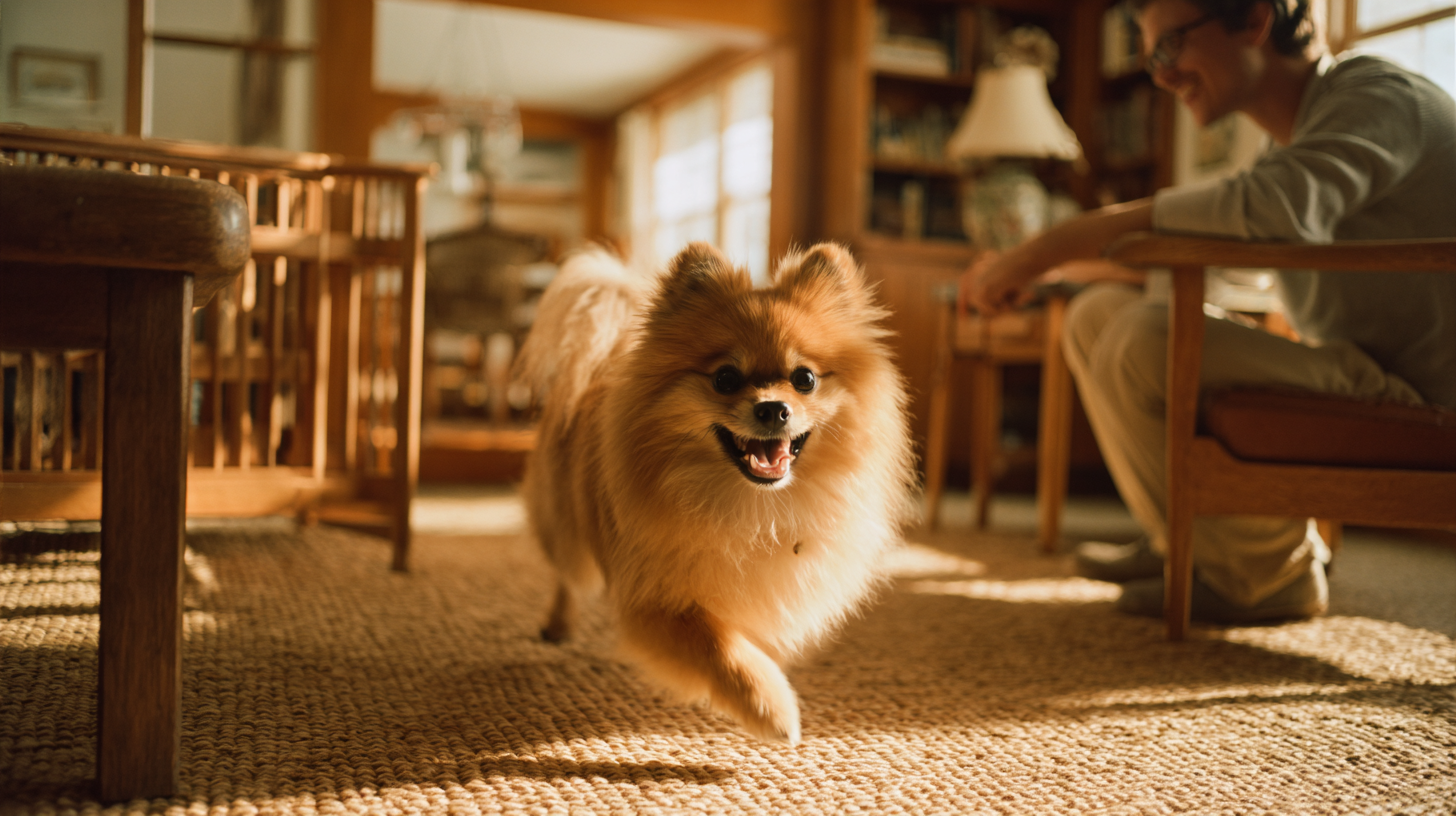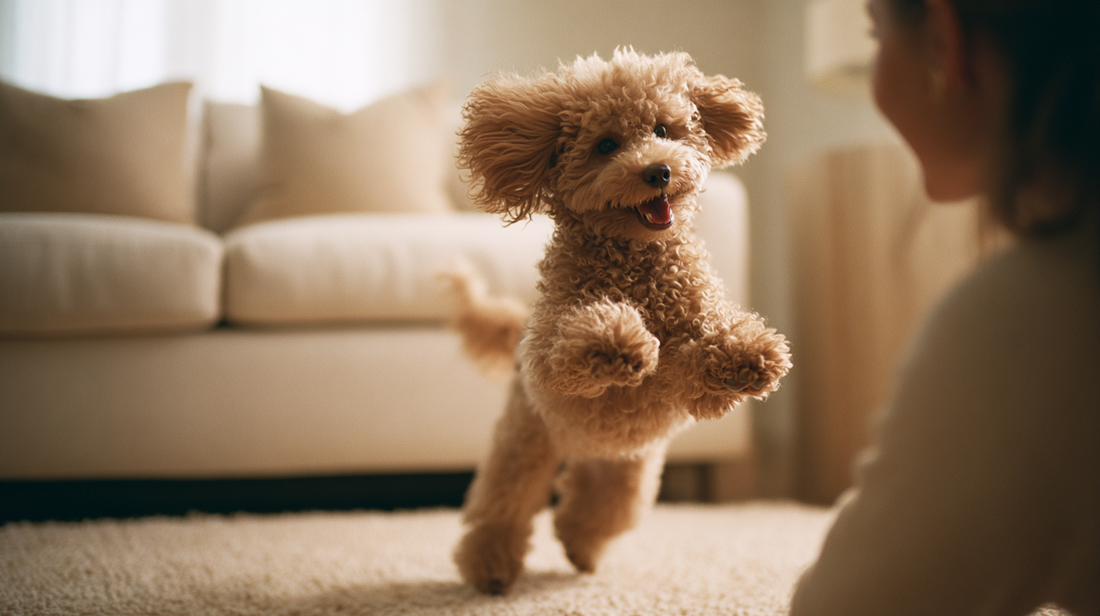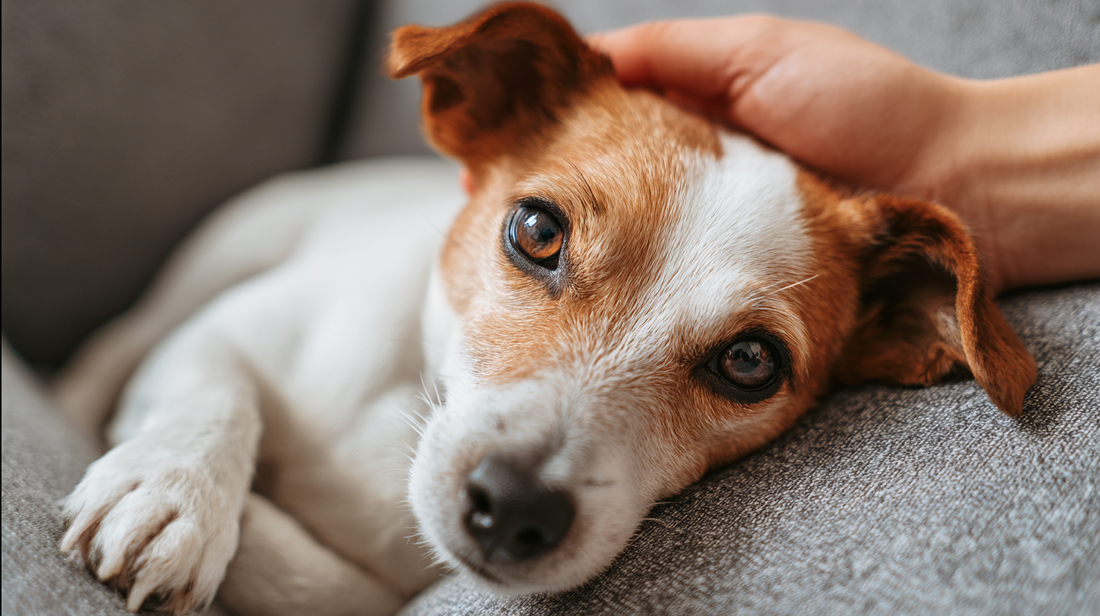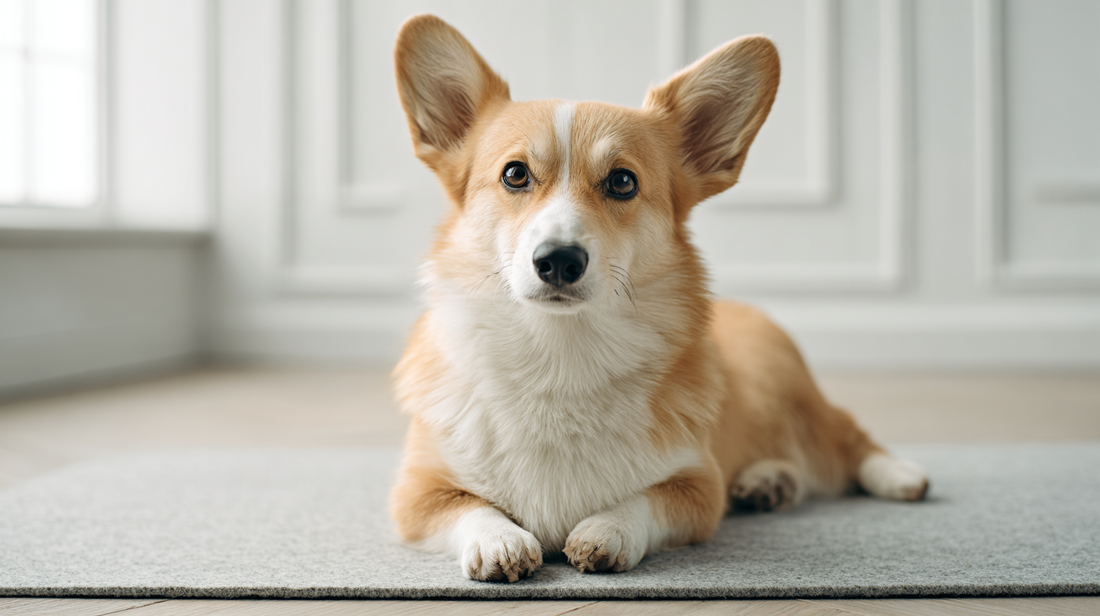As an experienced veterinarian and fellow dog lover, I understand this question deeply. When you’re navigating the whirlwind of puppyhood, “ what age do dogs calm down?” often feels less like a question and more like a desperate plea for a timeline. You adore your energetic companion, but you’re wondering when the endless enthusiasm—involving excessive jumping, barking, or chewing—will finally subside. Just like babies, puppies experience rapid growth, high energy, and intense learning during their early developmental stages. Here’s the truth: there’s no universal age when your dog magically switches from chaotic puppy to relaxed adult dog. Instead, a puppy calms gradually as part of behavioral maturation, heavily influenced by genetics, environment, consistent training, and physical health. Age is not the only factor that determines when a dog calms down—personality, environment, and even breed are also important factors.
This process requires your commitment to continuous support throughout your dog’s formative years, establishing the habits that will define their quality of life for decades to come. The journey through a dog's life involves many developmental stages, each bringing new changes in behavior and maturity.
Summary
The science of canine development: Understanding when puppies calm down
To understand when puppies calm down, we need to examine the key phases of canine development, while recognizing that rates vary greatly among dog breeds and individual personalities. The process of when a puppy calms is influenced by factors such as age, gender, growth, and unique personality traits. Puppy energy levels are typically high during early development, but these energy levels gradually decrease as the puppy matures.
The puppy stage and critical socialization (up to 6 months)
This initial period marks rapid neurological and social development. The critical socialization window typically occurs between 4 and 14 weeks of age. During this time, your goal isn’t calming your hyper puppy, but rather providing exposure—helping puppies form positive associations with various sights, sounds, environments, and social experiences.
From the veterinary perspective, preventing bad habits and ensuring your pup enjoys time with you is key. Your training must be entirely reward-based, teaching your puppy that obeying commands like ‘sit’ or ‘down’ leads to positive outcomes like food or treats. Consistency is central here: as pet parents, you should consistently reinforce rules using verbal or visual cues, ensuring your dog understands what you expect.
Most pups at this age have high energy levels and require the right amount of physical exercise and mental stimulation. It’s common for pups to have bursts of energy right after they eat, so timing meals with play or exercise can help manage their activity. Your play sessions should be age-appropriate, and crate training can provide a safe space for your pup to settle and sleep. Young puppies start to house train during this phase, making routine and positive reinforcement essential tools for your success.

The juvenile and adolescent phase (6 to 18–24 months)
This typically represents the hardest age for you as owners, as puppy energy peaks and dogs test boundaries. Developmentally, this phase resembles human adolescence. Between 5 and 24 months, dogs are overrepresented in rescue shelters, highlighting the strain when “puppy novelty” wears off.
What you perceive as hyperactivity is often a lack of impulse control or structure. Behavioral issues like redirected aggression and other impulse control problems commonly emerge between 18 and 24 months. While your dog may look physically mature, their emotional and impulse control systems are still developing. Calm behaviors such as relaxing or waiting patiently are not natural for adolescent dogs—they are totally foreign and must be deliberately taught through consistent training and routine. Like advising parents of adolescent humans, I advise you as dog owners to maintain training, remain consistent with rules, and sometimes restrict freedom during these difficult periods. This consistency reduces stress and potential conflict.
Different energy levels emerge based on breed during this phase. For example, a border collie or australian shepherd will naturally have more energy than many other dog breeds, requiring additional mental stimulation and physical exercise. Even smaller breeds can exhibit hyper puppy behavior without adequate outlets. Obedience training, impulse control training, and structured play sessions become crucial tools for managing this stage.
Social maturity: when do most puppies calm down? (1.5 to 3+ years)
For many pets, particularly larger breeds, true behavioral stability—or calmness—is often achieved between 1.5 and 3 years of age, corresponding with social maturity. By this stage, your dog is fully integrated into their social structure, and their temperament is largely established. This is the age when most puppies calm down into adult dogs.
If your dog remains highly reactive or anxious after the two-year mark, it's less likely to be puppy energy and more likely an underlying issue requiring management, such as fear and anxiety disorder, or chronic pain. This period marks the transition where we focus less on developmental delays and more on optimizing management and addressing ingrained behavioral patterns.
For a senior dog, calmness typically increases further as energy levels naturally decline, though health monitoring becomes even more critical during this life stage.

Why isn't my dog calming down? Hidden factors affecting energy
Undiagnosed pain and medical conditions
Behavioral changes are often the most subtle signs of underlying physical illness or pain. Dogs evolved to hide pain because showing weakness makes them targets. Chronic discomfort—especially orthopedic conditions (hip or elbow pain) or dental issues—can manifest as agitation, restlessness, or increased reactivity because your dog cannot settle comfortably.
For example, a dog refusing to sit readily might have hip pain, not disobedience. In cases of behavioral problems like guarding food or consuming non-food items, I must investigate underlying issues, such as gastrointestinal disorders. Addressing these health problems is often the first critical step to achieving lasting calm in your dog.
Inconsistent management and training methods
Behavioral decisions are motivated by your dog's need to gain something desired or avoid something unpleasant. If your dog learns that jumping gets attention (a desired gain) or that whining results in you ceasing an uncomfortable interaction (avoidance), that behavior will be repeated.
The power of consistency: inconsistency in rules or reactions from different family members creates stress and conflict for your dog, delaying the establishment of mature, calm behavior. Every member of your house must enforce the same expectations.
The problem with punishment: using punishment—physical contact, stern voices, or aversive tools like choke or shock collars—is strongly advised against. Punishing undesirable behavior increases your dog's fear and anxiety, leading to poorer emotional states and potentially worsening problems or encouraging aggression. Positive reinforcement reinforces the behavior you want to see, and it's essential for raising a well-adjusted, behaviorally sound adult.

Breed and individual variation in energy levels
While all dogs go through similar developmental phases, the timing and intensity vary. Selective breeding has modified physical traits that affect communication and behavior.
Physical limitations: dog breeds with brachycephalic (shortened) faces, short tails, or long coats may have reduced ability to display body language signals, making it harder for you and other dogs to read their emotional state.
Genetic influence: a border collie bred for herding will naturally exhibit different energy levels than a breed developed for companionship. While genetics influence temperament, you must apply proper care, training, and enrichment consistently throughout your dog's life for optimal physical and psychological health.

What is the 3-3-3 rule for dog anxiety?
The 3-3-3 rule is a helpful framework for understanding adjustment periods, particularly for rescue dogs entering new homes. It suggests:
3 days: your dog may feel overwhelmed and scared, potentially not eating or showing their true personality
3 weeks: your dog starts to settle into your routine, feeling more comfortable in their environment
3 months: your dog finally feels at home, building trust and showing their authentic personality
This rule helps you as pet parents set realistic expectations during transitions and understand that puppies calm down gradually, not instantly. It reminds us that patience and consistency are vital tools when helping your dog adjust to the world around them.

What age are dogs the calmest?
Dogs typically reach their calmest state between 3 and 7 years of age, after social maturity is complete but before senior years bring age-related changes. During this period, most dogs have settled into their personality, learned your household rules, and developed reliable impulse control.
However, “calmest” varies by breed. High-energy dog breeds like the australian shepherd or border collie may never be as calm as naturally low-energy breeds, even at maturity. A calm puppy of a naturally relaxed breed may become an exceptionally calm adult, while an energetic breed may simply shift from hyper to moderately active.
Female dogs may exhibit slightly calmer behavior than males in some breeds, though individual personality matters more than sex. Spay and neuter procedures can also influence energy, with some dogs showing decreased roaming and marking behaviors post-surgery, though the effects on overall calmness vary. Being spayed may reduce certain sexual behaviors in female dogs due to hormonal changes, but it does not guarantee a calmer or more relaxed dog—natural maturity and individual temperament play a larger role.

What is the hardest age for a dog?
The hardest age is typically between 6 and 18 months—the adolescent phase. During this period, your puppies have so much energy, test boundaries constantly, and may seem to "forget" previously learned commands. Impulse control is still developing, leading to destructive behavior, difficulty settling, and frustration for you as owners.
This age is challenging because your pup has outgrown adorable baby cuteness but hasn't yet matured into a reliable adult. Many puppies start exhibiting selective hearing, pulling on walks, and engaging with other dogs inappropriately. This phase requires your maximum patience, consistent training, and commitment to routine.
For you as pet parents, this is when professional trainers can be invaluable, providing the right tools and techniques to navigate this difficult period without resorting to punishment.
At what age do dogs become less hyper?
Most dogs become noticeably less hyper between 12 and 24 months, though this varies significantly by breed, individual temperament, and training. Small breeds often mature faster, potentially calming by their first birthday. Larger breeds, especially working or sporting breeds, may maintain high energy levels until age 2 or 3.
Factors influencing when your hyper puppy becomes less energetic include:
Breed: working breeds like border collies remain energetic longer than companion breeds
Spay/neuter status: spay and neuter procedures may slightly reduce some energy-related behaviors
Training investment: dogs receiving consistent obedience training and impulse control work often appear calmer earlier
Physical exercise: dogs getting adequate walks and play sessions expend energy appropriately
Mental stimulation: mentally engaged dogs through puzzle toys, chew toys, and training games show better self-control
Health: pain or medical conditions can paradoxically increase restlessness in your dog

Promoting lifelong calmness: Actionable tips
Prioritize health first
Commit to positive reinforcement training
Training provides mental stimulation and enrichment that improves your dog's welfare. Use rewards (treats, praise, toys) to teach desirable behaviors like sitting patiently, lying down, or going to a specific place. If they whine or nudge for attention, ignore it—this teaches your dog that calm, quiet behaviors receive attention while pushy behaviors don't.
Professional trainers can provide you with guidance on technique and timing, ensuring you're using the right tools effectively.
Ensure consistent structure and routine
Your dogs thrive when they understand the rules. Every member of your household must enforce the same cues consistently, regardless of time or mood. Establish a routine for feeding, walks, potty breaks, and sleep. Predictability helps your dogs feel secure and reduces anxiety-driven hyper behavior.
Crate training provides structure, offering a safe space where your pup can relax without constant stimulation. A crate isn't punishment—it's a den-like environment that helps your dogs settle naturally.

Provide adequate physical exercise
Different dog breeds require different exercise amounts. High-energy breeds need substantial daily walks, play sessions, and activities that challenge them physically. Even indoor dogs benefit from structured exercise rather than just access to a yard.
The right amount of physical activity prevents boredom-driven destructive behavior and helps your puppies burn off excess energy before you expect them to settle. However, balance is key— over-exercising young puppies can damage their developing joints.
Integrate mental exercise and enrichment
High energy often stems from boredom or lack of mental engagement. Training your dog in new skills (targeting, finding hidden treats) is highly enriching. Puzzle feeders, chew toys, and foraging activities satisfy your dog's cognitive needs and tire them mentally—often more effectively than physical exercise alone.
For working breeds like the border collie or australian shepherd, mental stimulation is non-negotiable for achieving calm behavior.
Manage the environment
Create an environment conducive to calmness. Provide comfortable places for your dog to sleep, minimize chaotic household activity when teaching settle behaviors, and use baby gates or a crate to prevent rehearsal of unwanted behaviors when you can't supervise.
If your dog struggles around other dogs or gets overstimulated during walks, manage their exposure carefully while building skills through training.
Seek professional guidance early
If you encounter behaviors like growling or lifting a lip, immediately stop your approach and consult a professional. Your pet health expert should be your primary, most reliable source for husbandry and behavior advice.
Don't wait until problems are severe. Early intervention prevents issues from becoming ingrained patterns that are harder to address in your dog's life.

Final thoughts: Raising a calm, confident companion
Understanding when puppies calm down isn't about waiting for a magic age—it's about you actively shaping your dog's development through health care, training, exercise, and enrichment. Most dogs reach behavioral maturity between 1.5 and 3 years, with peak calmness between 3 and 7 years of age.
The adolescent phase (6–18 months) represents the hardest age, testing even you as experienced pet parents. During this time, maintaining consistent training, providing adequate mental and physical outlets, and managing the environment become your most important tools. Remember the 3-3-3 rule when setting expectations for adjustment periods.
Every breed and individual varies—an energetic border collie will have different needs than a naturally calm companion breed. By recognizing your dog's unique energy levels, providing breed-appropriate outlets, and using positive reinforcement consistently, you're not passively waiting for calm—you're building it.
A healthy, happy dog depends on you as owners being sensitive to their needs and willing to invest time in their care. By focusing on consistency, health, and positive methods, you're actively raising a confident, resilient family member with a high quality of life for years to come. The journey from hyper puppy to calm adult dog is challenging but deeply rewarding—embrace each stage, use the right tools, and expect gradual progress rather than overnight transformation.
The information in this article is based on the following scientific publications:
- Elliott, J., & Grauer, G. (Eds.). (2006-2007). BSAVA Manual of Canine and Feline Nephrology and Urology (2nd ed.). BSAVA Publications.
- Villiers, E., & Blackwood, L. (Eds.). (2005). BSAVA Manual of Canine and Feline Clinical Pathology (2nd ed.). BSAVA Publications, Gloucester
- Horwitz, D. F., & Mills, D. S. (Eds.). (2009). BSAVA Manual of Canine and Feline Behavioural Medicine (2nd ed.). BSAVA Publications, Gloucester
- Harvey, A., & Tasker, S. (Eds.). BSAVA Manual of Feline Practice: A Foundation Manual. BSAVA Publications
- Rendle, M., & Hinde-Megarity, J. (Eds.). (2022). BSAVA Manual of Practical Veterinary Welfare (1st ed.). BSAVA Publications.
Looking for a solution? Start here
Stylla Calmness for dogs
Supports relaxation and emotional balance with amino acid-based formulation
- Promotes emotional balance and relaxation
- Helps maintain balanced behaviour
- Supports healthy physiological equilibrium
Made in Switzerland with strict quality standards





